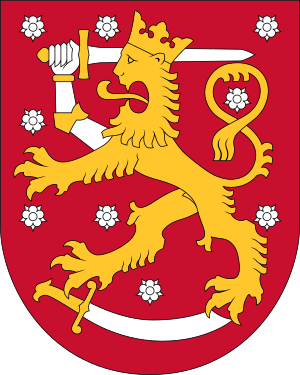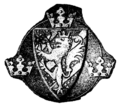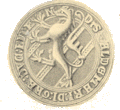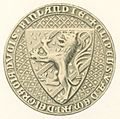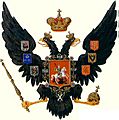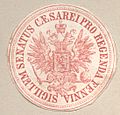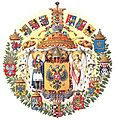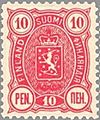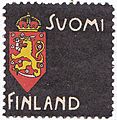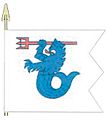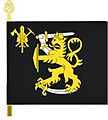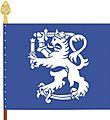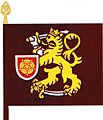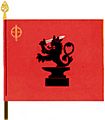Coat of Arms of Finland facts for kids
The coat of arms of Finland is a special symbol for the country of Finland. It shows a strong golden lion wearing a crown. The lion is holding a sword in its right front paw. It stands on its back legs on top of a curved sabre. Around the lion, there are nine silver roses on a bright red background.
Contents
What the Coat of Arms Looks Like
The Finnish coat of arms is easy to spot. It has a red shield with a golden lion. The lion is standing up, ready for action. It holds a straight sword in one paw. Under its feet, there is a curved sword, or sabre. This shows that the lion is stepping on it. There are nine silver roses scattered around the lion. These roses are often seen as symbols of the nine historical regions of Finland.
A Short History of the Finnish Lion
The design of the Finnish coat of arms is very old. It has been used for hundreds of years.
Early Beginnings
The lion symbol first appeared a long time ago. One of the earliest versions was seen in the coat of arms of Valdemar Birgersson in 1252. This was a time when Finland was part of the Kingdom of Sweden. The lion was also part of the Folkunga family's coat of arms. You can see this in the shield of Magnus Ladulås. A seal from Valdemar, Duke of Finland from the early 14th century also shows a similar lion.
Changes Over Time
Over the centuries, the coat of arms changed a little.
During Swedish Rule
The lion symbol became more clearly linked to Finland. In the 1580s, the coat of arms of Finland was shown in the chronicle of Laurentius Petrin. You can also see it on the tomb of King Gustav Vasa in Uppsala Cathedral in Sweden. This shows how important the symbol was even then.
Under Russian Rule
From 1809 to 1917, Finland was a Grand Duchy under the Russian Empire. During this time, the Finnish coat of arms was often shown with the Russian double-headed eagle. This was a way to show that Finland was part of the larger Russian Empire. The Finnish lion was still there, but it was part of a bigger symbol. Different versions were used, like the one from 1881, which had 16 roses instead of nine.
Modern Finland
After Finland became independent in 1917, the coat of arms became even more important. It was used on the state flag from 1918 to 1978. Artists like Akseli Gallen-Kallela even made their own ideas for the coat of arms. Today, the coat of arms is a strong symbol of Finland's independence and history. It is used by the government and the military. For example, the Finnish Defence Forces and different military units use the lion in their own symbols.
Images for kids
-
Figure 2: Coat of arms of Valdemar Birgersson
-
Figure 5: Grand-ducal coat of arms of Finland, tomb of King Gustav Vasa (Uppsala cathedral, Sweden)
-
Figure 6: Coat of arms of Karelia, tomb of King Gustav Vasa (Uppsala cathedral, Sweden)
-
Akseli Gallen-Kallela's proposal for the coat of arms of Finland.
-
Coat of arms of Finland in the chronicle of Laurentius Petrin from the 1580s.
See also
 In Spanish: Escudo de Finlandia para niños
In Spanish: Escudo de Finlandia para niños


